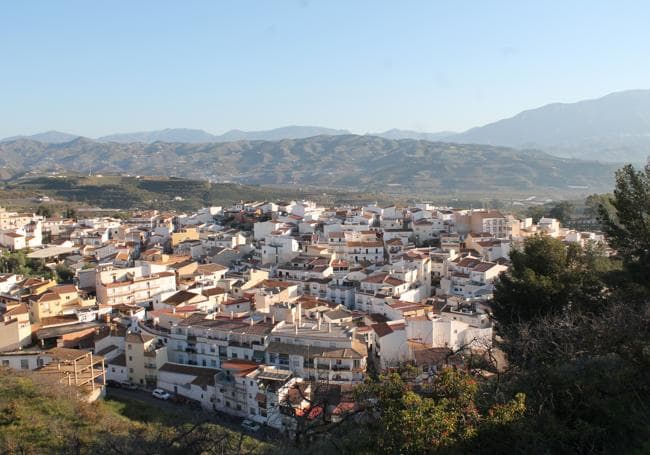Find out why this is probably the most musical village in Malaga province
Several large-scale musical instruments have been installed around the streets to remind residents and visitors of the importance of music for Benamocarra
More than half a dozen large-scale musical instruments scattered around the streets, lyre harp symbols at the entrance of some houses or a statue paying tribute to its most illustrious son, the composer Eduardo Ocón. There is no doubt that the residents of Benamocarra in the Axarquía on the eastern side of Malaga province are passionate about music.
It is not clear where the origin of this love of music lies but the fact that Eduardo Ocón was born there almost two centuries ago has undoubtedly been an important factor over the years. The musician became one of the most important composers of Spanish music in the 19th century and many of the village's residents have followed in his footsteps by becoming musicians themselves.

Today the village remembers him with a plaque on the house where he was born, however it is not open to the public as one of his descendants still lives there today. In addition, for decades there has been a statue of a lyre harp which pays tribute to him next to the village church. The same instrument, which forms part of the village's official coat of arms, is also replicated as a symbol of the passion for music at the entrance of many houses.
Since September 2022 several large-scale musical instruments have been installed around the village to remind residents and visitors of the importance of music for Benamocarra. A saxophone, a drum, a guitar and cymbals are some of the instruments that have been placed around the centre of the village. On the roundabout at the entrance to the village on the road from Vélez-Málaga there are musical notes and a keyboard.
The best way to look for the instruments is a leisurely stroll around the village. Walking from Plaza del Calvario towards Santa Ana church offers the chance to see quite a few of them as well as learning about the history of the village and its Al-Andaluz origins. Go in spring to see the flowerpots and different ornamental plants, particularly in Plaza de las Flores, (flowers square) which lives up to its name.
The aforementioned parish church of Santa Ana, which houses the venerated image of the Santo Cristo de la Salud (Holy Christ of health), is the main religious building in the village. Inside is the 16th century temple, which has been reformed.
Locals will tell you that the legend of the image of Santo Cristo de la Salud, which presides over the altar, starts in Torre del Mar from where the image was brough to the village to prevent an epidemic from affecting it. However, once it had served its purpose, it could not be returned.
The story goes that as it moved away from the village, the float it was being carried on became heavier and heavier to the point that the men carrying it had to stop and turn around. That place today is the small chapel known as the Santo Chiquito, which can be seen on the same road from Vélez-Málaga, just a few metres before reaching the roundabout with musical notes.

Another emblem of this village is the Caños fountain, located on the edge of the village. At present, there is no water flowing, although it is hoped that the spring rains will bring the the fountain to life. La Fuente de los Caños dates back to Spain's Islamic period, although it was restored at the end of the 19th century and his since gone through another restoration.
A truly artistic village, Benamocarra's coat of arms not only features the lyre harp but also a nod to the theatre, with its comedy and tragedy masks next to the musical instrument.
Another challenge is to find out why in its recipe book there is a dessert called gazpacho frito (fried gazpacho).

